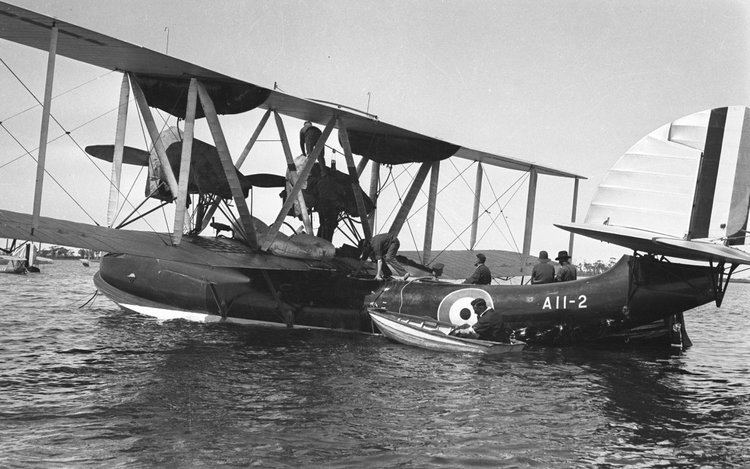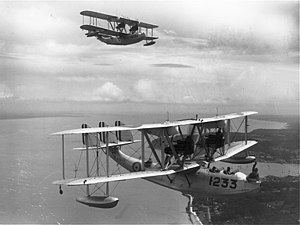Top speed 154 km/h Length 15 m First flight March 10, 1925 | Wingspan 23 m Introduced 1925 Manufacturer Supermarine | |
 | ||
The Supermarine Southampton was a 1920s British flying boat, one of the most successful flying boats of the interwar period. It was a development of the Supermarine Swan, which was used for a ten-passenger service between England and France.
Contents
- Design and development
- Operational history
- Variants
- Military Operators
- Civil Operators
- Surviving aircraft
- Specifications Southampton II
- References

Design and development

The Southampton was designed by the team of R. J. Mitchell, better known as the designer of the later Spitfire. Due to the success of the Swan, the Air Ministry ordered six Southamptons direct from the drawing board, which was unusual. As the Swan had acted in effect as a prototype, development time was short.

The Southampton was a twin-engine biplane flying boat, with the tractor engines mounted between the wings. The Southampton Mk I had both its hull and its wings manufactured from wood. The Southampton Mk II had a hull with a single thickness of metal (duralumin) (the Mk I had a double wooden bottom). This change gave a weight saving of 900 lb (409 kg) allowing for an increase in range of approximately 200 mi (320 km). In 1929, 24 of the Mk I were converted by having newly built metal hulls replacing the wooden ones. Some of the later aircraft were built with metal wings and were probably designated as Southampton Mk III. There were three positions for machine guns, one in the nose and two staggered in the rear fuselage.

The first flight of a production aircraft was made on 10 March 1925, and delivery to the RAF started in mid-1925.
Operational history

Southamptons first entered RAF service in August 1925 with No. 480 (Coastal Reconnaissance) Flight at RAF Calshot. In a series of "showing the flag" flights, the type quickly became famous for long-distance formation flights; the most notable was a 43,500 km (27,000 mi) expedition in 1927 and 1928. It was carried out by four Southamptons of the Far East Flight, setting out from Felixstowe via the Mediterranean and India to Singapore.
Further Southamptons were sold to a number of other countries. Eight new aircraft were sold to Argentina, with Turkey purchasing six aircraft and Australia buying two ex-RAF Mk 1 aircraft. Japan also purchased a single aircraft which was later converted into an 18-passenger cabin airliner. One RAF aircraft was loaned to Imperial Airways, with British Civil Registration G-AASH, for three months from December 1929 to replace a crashed Short Calcutta on the airmail run between Genoa and Alexandria. In all, 83 Southamptons were constructed, excluding the three-engined Southampton MK X which was a single prototype.
Variants
Different powerplants were fitted in variants:
Military Operators
Civil Operators
Surviving aircraft
The restored wooden fuselage of Supermarine Southampton 1 N9899 is on display at the Royal Air Force Museum in Hendon.
Specifications (Southampton II)
Data from Supermarine Aircraft since 1914
General characteristics
Performance
Armament
